Module 5 - Worksheet - Surface Anatomy and General Questions about Pelvis, Hip, and Thigh
1/48
There's no tags or description
Looks like no tags are added yet.
Name | Mastery | Learn | Test | Matching | Spaced |
|---|
No study sessions yet.
49 Terms
Which muscle has the ability to flex and extend the hip, but not simultaneously?
A) Rectus femoris
B) Iliopsoas
C) Gluteus medius
D) Gluteus maximus
C) Gluteus medius
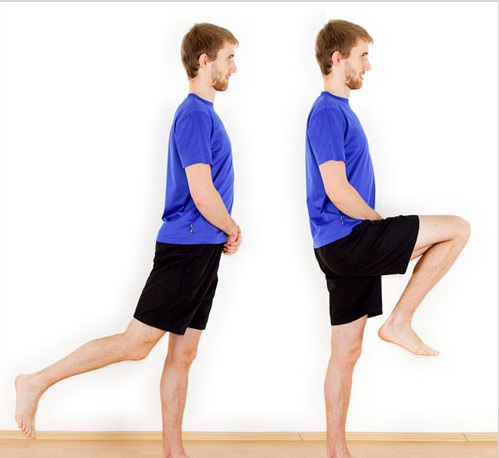
How many degrees of hip flexion and hip extension is normal in the standing position?
A) Hip flexion = 90 degrees; Hip extension = 50 degrees
B) Hip flexion = 70 degrees; Hip extension = 40 degrees
C) Hip flexion = 90 degrees; Hip extension = 20 degrees
D) Hip flexion = 120 degrees; Hip extension = 20 degrees
C) Hip flexion = 90 degrees; Hip extension = 20 degrees
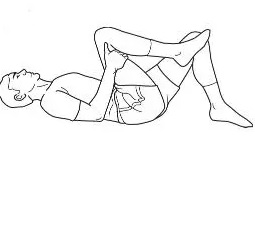
How does hip flexion change when it is done in the position depicted below as opposed to standing?
A) It increases by about 10 degrees
B) It stays the same
C) It decreases by about 20 degrees
D) It increases by about 30 degrees
D) It increases by about 30 degrees
The _____ ______ can be palpated by following the superior pelvis from the ASIS to the PSIS on the side of the torso.
iliac crest
The femur is the longest, strongest, and heaviest bone in the human body.
A) True
B) False
A) True
Which anatomical structure can be isolated just anterior to the biceps femoris muscle?
A) Femoral aponeurosis
B) Linea alba
C) Thoracolumbar fascia
D) Iliotibial band
D) Iliotibial band
What is the name of the horizontal line between the buttocks and the thigh?
A) Buttocks dimples
B) Gluteal cleft
C) Gluteal fold
D) Sits bones
C) Gluteal fold
Which joint is found just inferior and medial to the PSIS?
A) Costovertebral
B) Pubic Symphysis
C) Sacroiliac
D) Lumbosacral
C) Sacroiliac
Which muscle lies superficial to the sciatic nerve and can compress it?
A) Quadratus femoris
B) Obturator externus
C) Piriformis
D) Obturator internus
C) Piriformis
What structure decreases friction at the gluteus maximus attachment and along the iliotibial band at the hip?
A) Tubercle bursa
B) Ischial bursa
C) Trochanteric bursa
D) Iliopsoas bursa
C) Trochanteric bursa
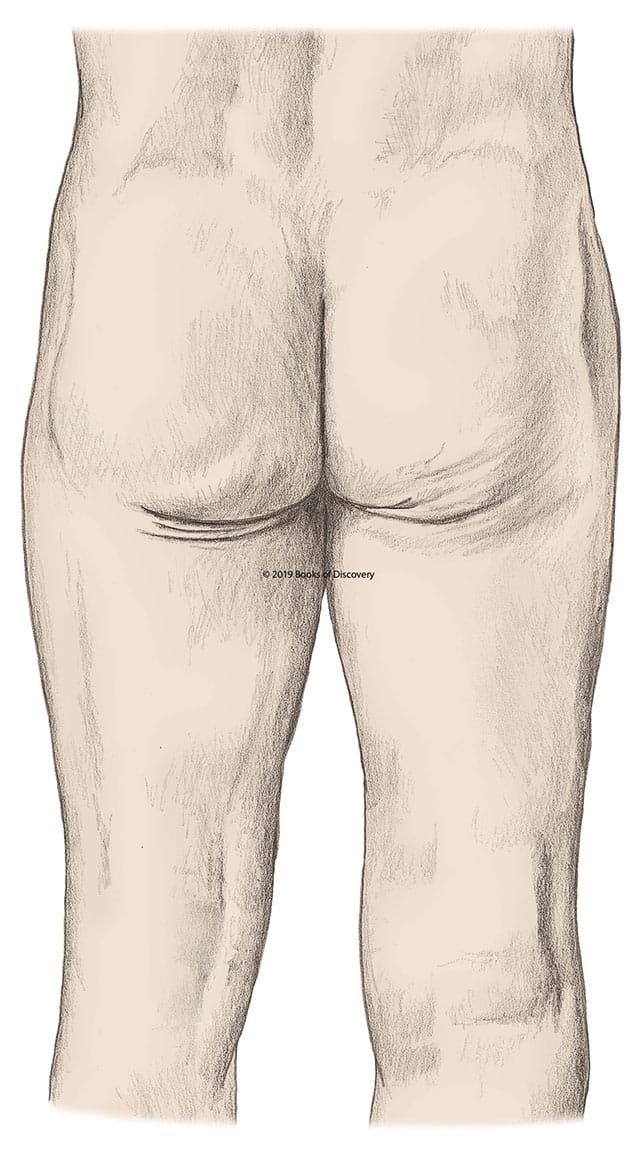
identify where the RIGHT gluteal fold is located.
bottom right butt cheek
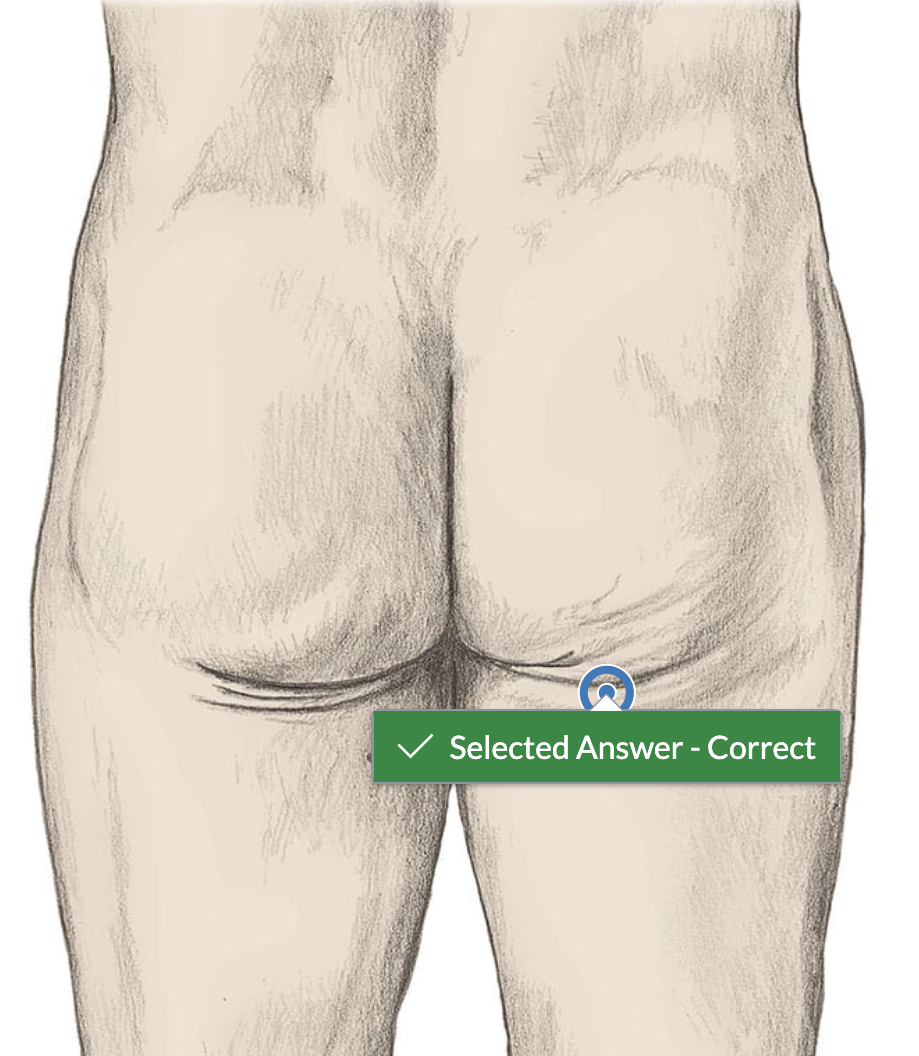
hotpsot
Passive extension of hip would ______ the gluteus maximus.
shorten
Passive abduction of hip would _______the adductor brevis and longus.
lengthen
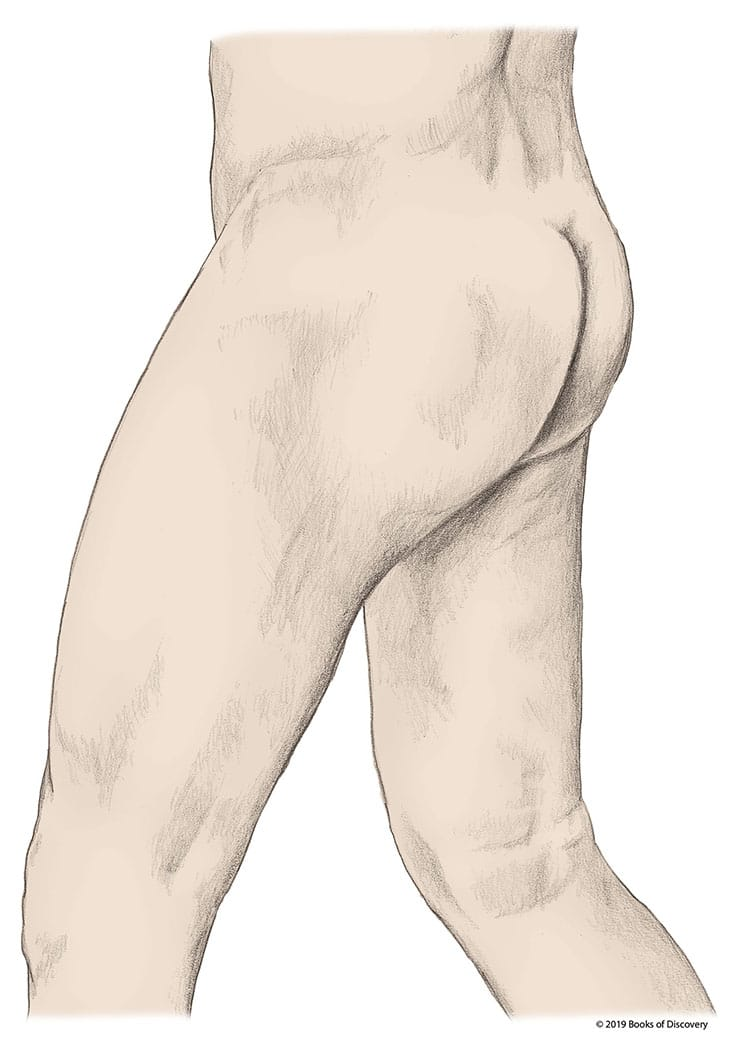
Identify the general area that you will find the iliotibial band.
lateral side of upper thigh
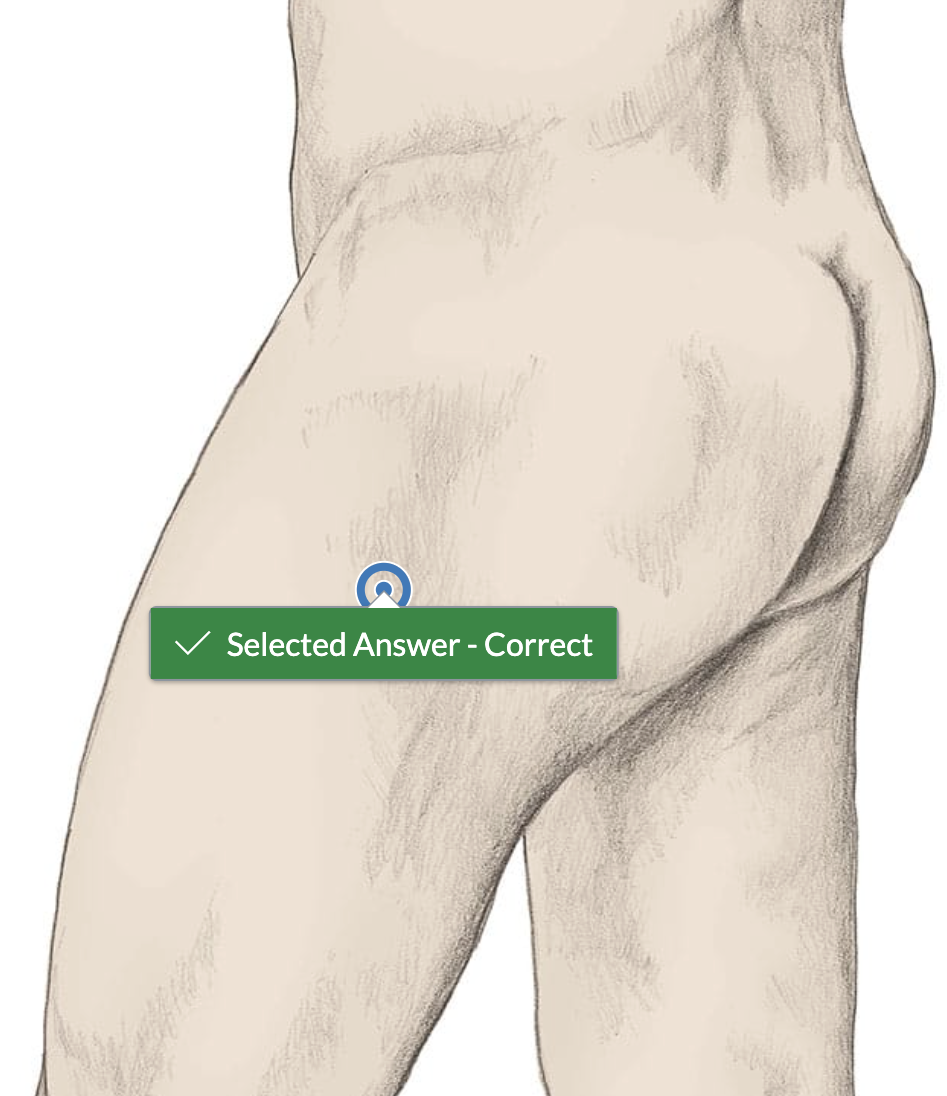
What joints do the muscles of the pelvis and thigh primarily create movement at? More than one answer
-Femeroacetabular
-Talocrural
-Tibiofemoral
-Pubic Symphysis
femeroacetabular
tibiofemoral
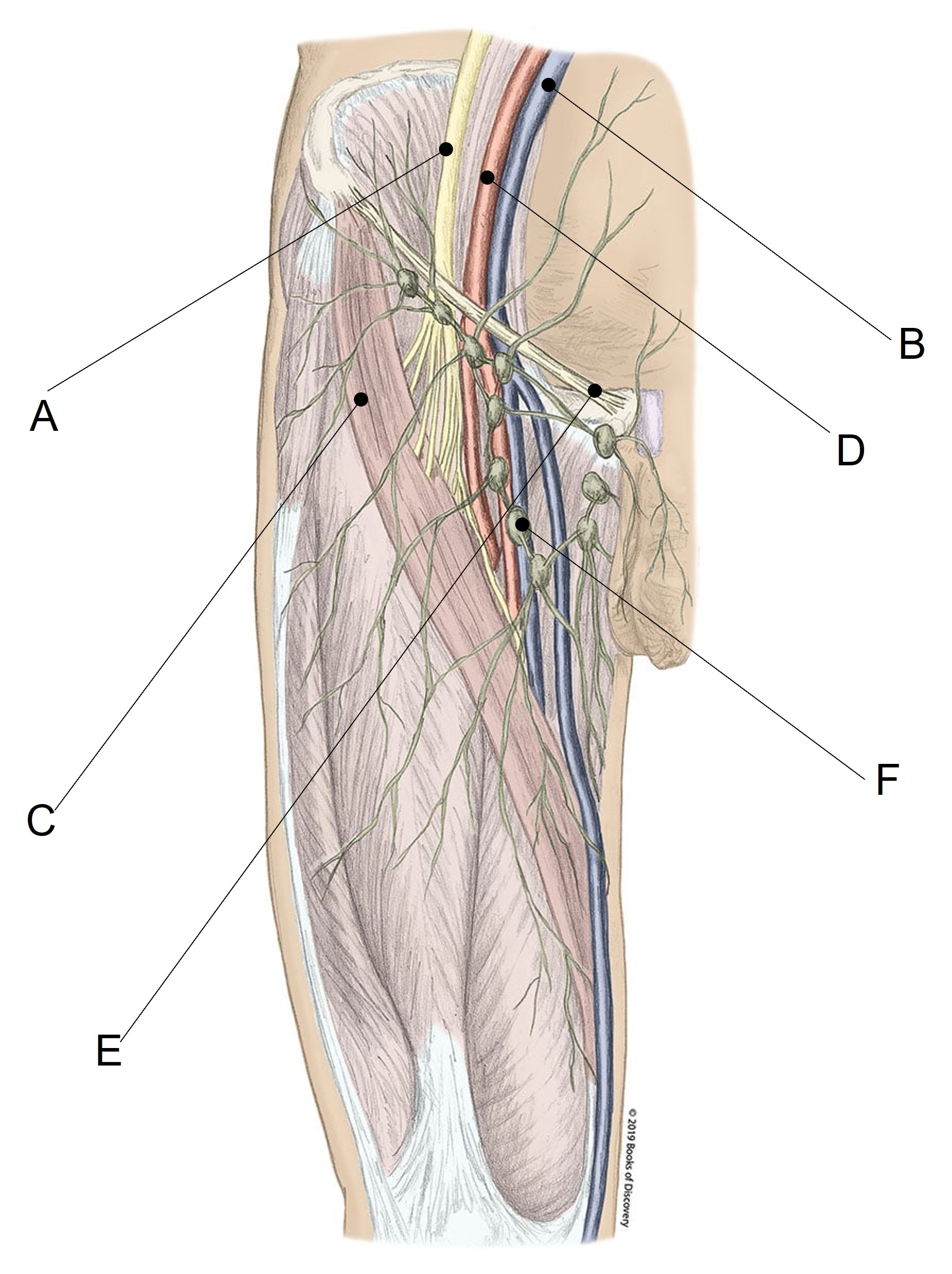
Label the diagram below using the matching system provided. What is A?
A) Sartorius
B) Inguinal ligament
C) Lymph node
D) Femoral nerve
E) Femoral artery
F) Femoral vein
D) Femoral nerve
Which vertebral body do the highest points of the iliac crests align with?
A) Lumbar 4
B) Sacral 1
C) Lumbar 5
D) Lumbar 3
A) Lumbar 4
Passive tilting of the pelvis would ________ the biceps femoris.
lengthen
The _______ ___________ are often called the "sits bones".
ischial tuberosities
The ______ is composed of 4-5 fused vertebrae and the ______ is composed of 3-4 fused vertebrae.
sacrum
coccyx
Which two bony landmarks serve as attachments for the "adductor drape" which is the connective tissue band formed by the adductor muscles? More than one answer
A) Ischial tuberosity
B) Superior ramus of pubis
C) Anterior inferior iliac spine
D) Anterior superior iliac spine
E) Symphysis pubis
F) Obturator foramen
ischial tuberosity
superior ramus of pubis
The ischial tuberosity is the common origin of what muscle group?
A) Lateral rotators
B) Hamstrings
C) Adductors
D) Quadriceps
B) Hamstrings
Which of the gluteal muscles is the most posterior and superficial?
A) Minor
B) Maximus
C) Minimus
D) Medius
B) Maximus
Which of the following bony landmarks can be palpated by sliding your fingerpads inferiorly 4-6 inches along the lateral side of the thigh?
A) Lesser trochanter
B) Ischial tuberosity
C) Iliotibial band
D) Greater trochanter
D) Greater trochanter
Which of the following muscles crosses the tibiofemoral joint?
A) Pectineus
B) Gracilis
C) Adductor magnus
d) Adductor longus
B) Gracilis
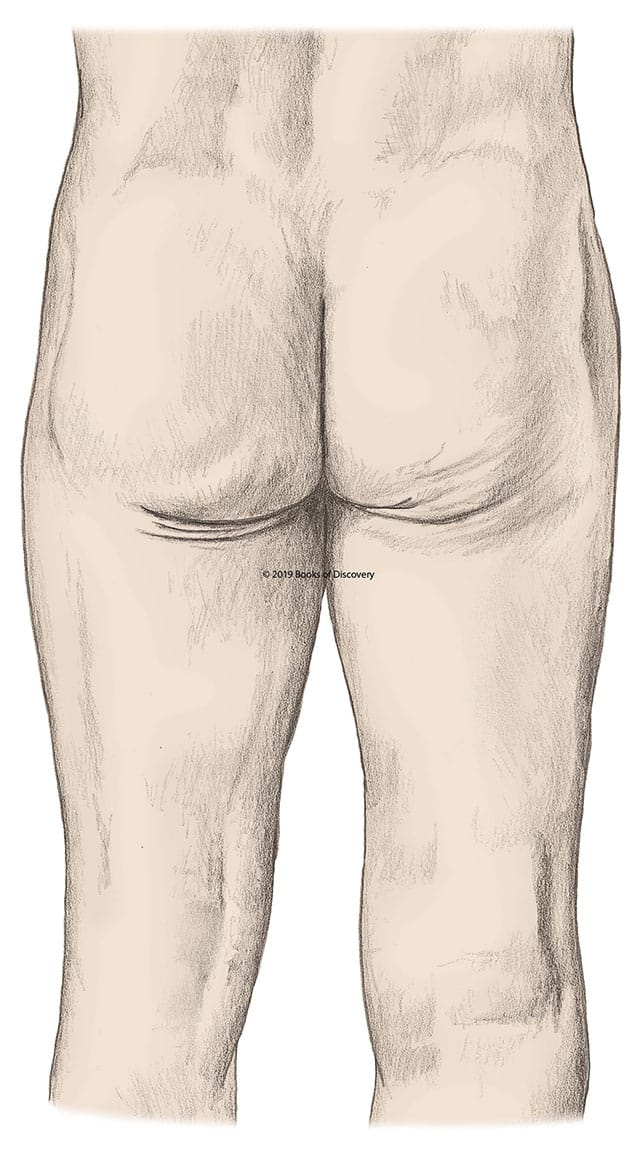
identify where the coccyx is located
top between butt cheeks
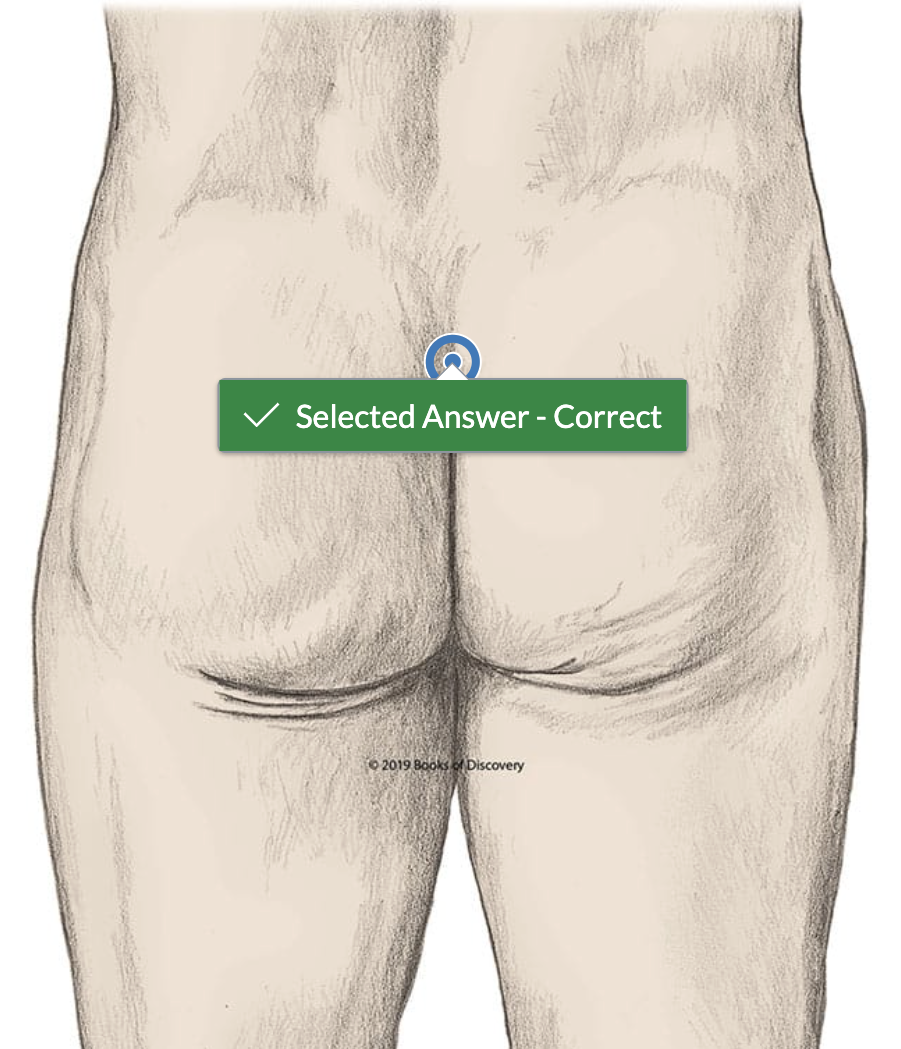
Which of the following muscles is located both medially and posteriorly on the thigh?
A) Semimembranosus
B) Pectineus
C) Adductor longus
D) Adductor magnus
D) Adductor magnus
Which muscle flexes your hip and runs from the anterior surfaces of the lumbar vertebrae to the lesser trochanter of the femur?
A) Rectus abdominus
B) Quadratus lumborum
C) Iliacus
D) Psoas major
D) Psoas major
Which bony landmark can be identified by the two small dimples at the base of the lower back?
A) Anterior superior iliac spine
B) Posterior superior iliac spine
C) Sacral apex
D) Ischial tuberosity
B) Posterior superior iliac spine
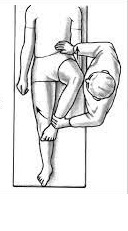
What is the normal range of motion for this action?
A) 75 degrees
B) 50 degrees
C) 20 degrees
D) 15 degrees
B) 50 degrees
Which surface or topographical feature is the coccyx bone located closest to?
A) Sits bones
B) Buttocks dimples
C) Gluteal cleft
D) Gluteal fold
C) Gluteal cleft
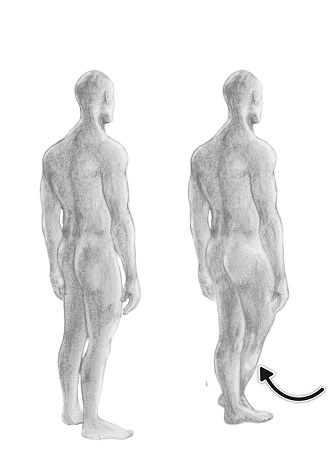
What is the normal range of motion for this action?
A) 5 degrees
B) 20 degrees
C) 40 degrees
D) 15 degrees
B) 20 degrees
Passive flexion of the hip would ______ the rectus femoris, but __________ the semimembranosus.
shorten
lengthen
Which of the following bones are considered a part of the pelvic girdle and the vertebral column? More than one answer
A) Coccyx
B) Sacrum
C) Ischium
D) Femur
E) Pubis
F) Ilium
G) Lumbar vertebra
coccyx
sacrum
The ____ ______is located on the medial surface of the coxal bone and serves as an attachment site for a hip flexor muscle.
iliac fossa
Which bony landmarks can help you outline the position of the piriformis muscle?
A) Greater trochanter
B) Coccyx
C) Posterior superior iliac spine
D) Median crest of sacrum
E) Spinous process of 5th lumbar vertebra
F) Iliac crest
greater trochanter
coccyx
posterior superior iliac spine
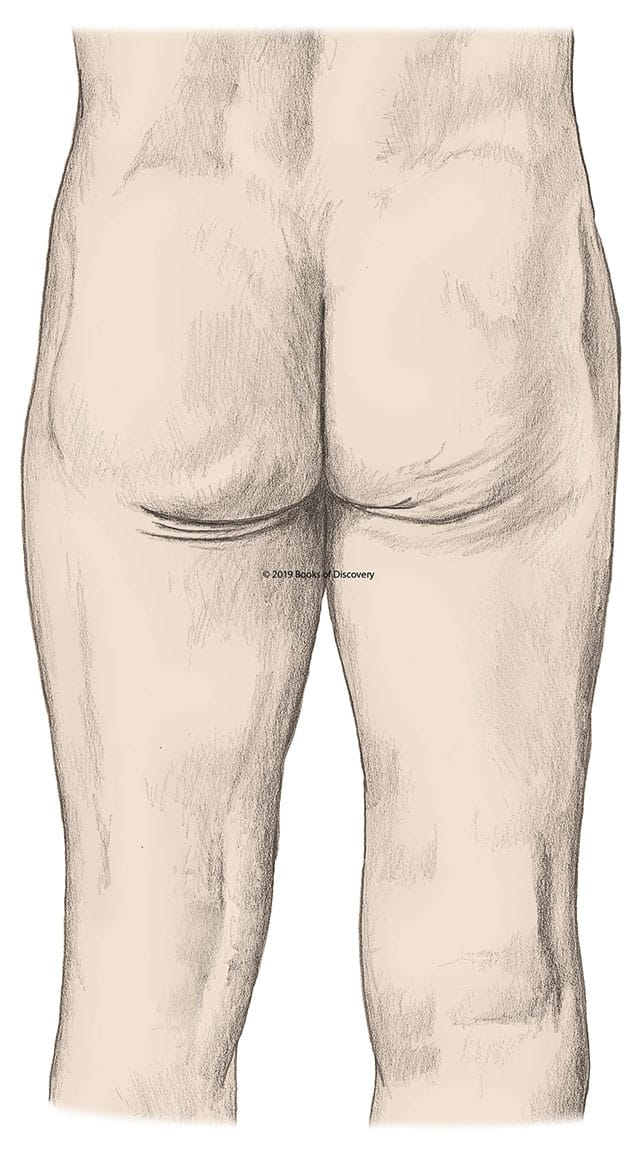
identify where the sacrum is located
top of butt crack
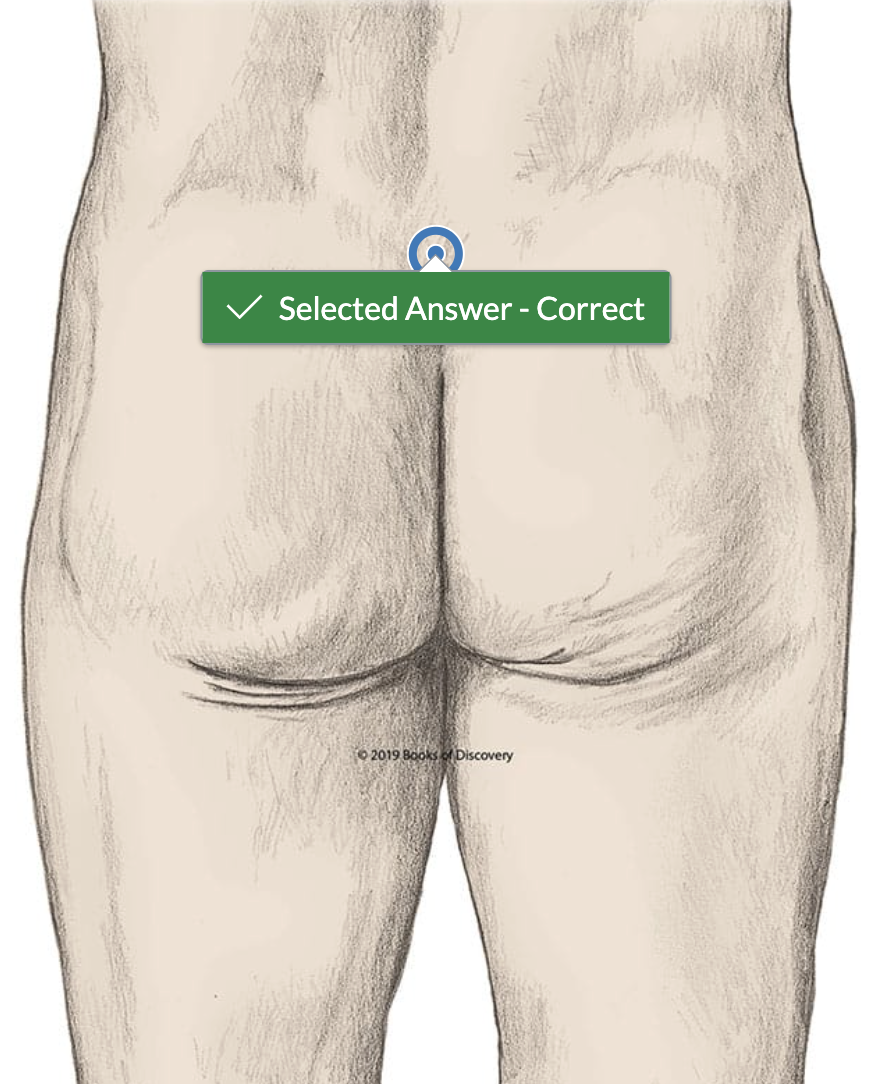
Which of the following muscles is the only biarticular quadriceps muscle?
A) Rectus femoris
B) Vastus intermedius
C) Vastus medialis
D) Vastus lateralis
A) Rectus femoris
Which muscle crisscrosses the thigh from lateral to medial?
A) Adductor magnus
B) Gracilis
C) Sartorius
D) Iliopsoas
C) Sartorius
Which of the following muscles does the gluteus minimus lie underneath?
A) Quadratus femoris
B) Gluteus medius
C) Piriformis
D) Adductor brevis
B) Gluteus medius
Passive flexion of the knee would ________ the vastus lateralis.
lengthen
Which tendons blend together to become the pes anserine at the medial knee?
A) Sartorius
B) Semitendinosus
C) Gracilis
D) Semimembranosus
E) Adductor magnus
F) Vastus medialis
sartorius
semitendinosus
gracilis
Which muscle are you tracing if you take your finger from the anterior inferior iliac spine to the patella?
A) Sartorius
B) Adductor longus
C) Iliopsoas
D) Rectus femoris
D) Rectus femoris

What is the normal range of motion for this action?
A) 15 degrees
B) 50 degrees
C) 40 degrees
D) 75 degrees
C) 40 degrees
The female pelvis is more narrow than the male pelvis.
A) True
B) False
B) False
What are the bony prominences located on the superior part of the pubic crest?
A) Ischial tubercles
B) Iliac trochanter
C) Pubic tubercles
D) Pubic trochanters
C) Pubic tubercles
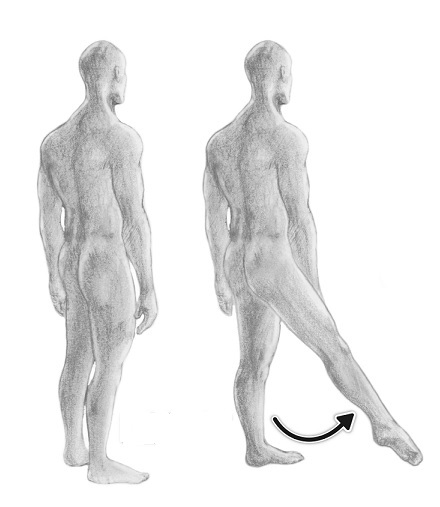
What is the normal range of motion for this action?
A) 20 degrees
B) 40 degrees
C) 75 degrees
D) 15 degrees
B) 40 degrees
Passive extension of the knee would ________ the vastus intermedius.
shorten